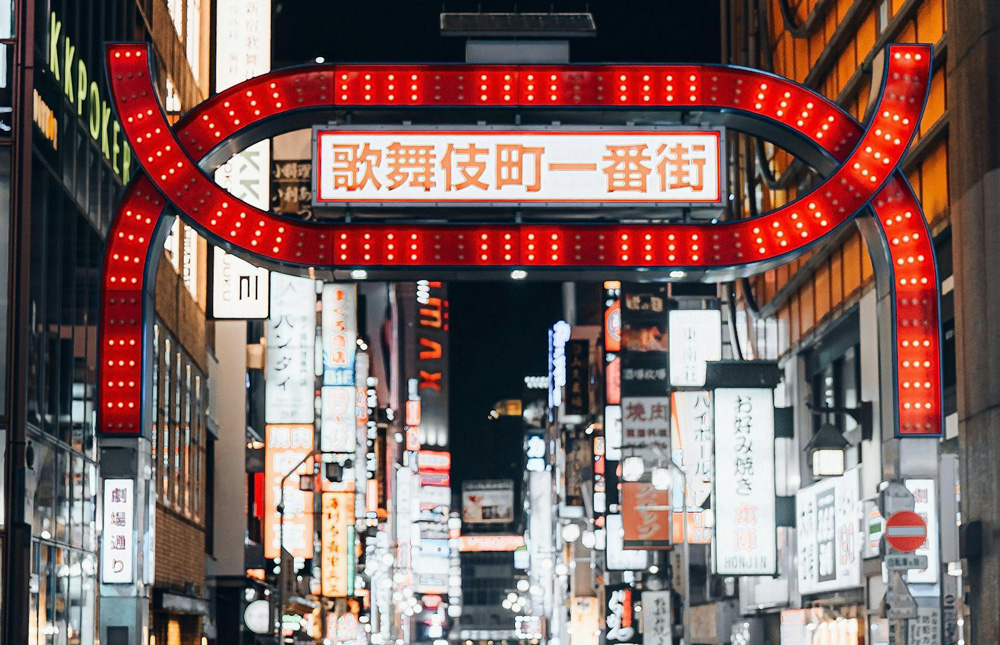Introduction
Shinjuku, one of Tokyo’s 23 wards, is the epitome of Japan’s bustling capital. Centered around the world’s busiest railway station, this district seamlessly blends modern skyscrapers, vibrant shopping areas, diverse entertainment venues, and the infamous Kabukicho red-light district. Whether you’re a business executive, a shopping enthusiast, or a nightlife lover, Shinjuku offers something for everyone, showcasing Tokyo’s unique allure.
Key Information
- Shinjuku Station handles over 2 million passengers daily
- The western area features a skyscraper district, including the Tokyo Metropolitan Government Building
- Kabukicho, Japan’s largest red-light district, lies to the northeast
- Major department stores and shopping centers surround the station
- Shinjuku Gyoen is a famous spot for cherry blossom and autumn foliage viewing
Historical Background
Shinjuku’s history dates back to the early 17th century when it was a small village called Naito-Shinjuku, serving as a post station on the Koshu Kaido road. The name “Shinjuku” means “new post station.”
The opening of Shinjuku Station in 1885 marked the area’s transition into a modern commercial district. Following World War II, Shinjuku rapidly developed into one of Tokyo’s primary commercial and entertainment centers.
In 1991, the Tokyo Metropolitan Government offices relocated to Shinjuku, further cementing its status as Tokyo’s administrative and commercial hub.
Major Attractions
Tokyo Metropolitan Government Building
This 243-meter tall twin-tower complex, designed by Kenzo Tange, is Shinjuku’s most recognizable landmark. Visitors can enjoy free access to observation decks on the 45th floor of both towers, offering panoramic views of Tokyo and, on clear days, Mount Fuji.
Hours: 9:30-22:00 (last entry 21:30)
Admission: Free
Recommended visit time: 1-2 hours
Shinjuku Gyoen National Garden
Originally a private garden of the Imperial Family, Shinjuku Gyoen opened to the public in 1949. This 58.3-hectare park features Japanese, English, and French garden styles. With over 10,000 trees, including cherry blossoms and ginkgos, it’s a popular spot for hanami (cherry blossom viewing) and momijigari (autumn leaf viewing).
Hours: 9:00-16:30 (winter) or 18:00 (summer), closed Mondays
Admission: 500 yen for adults, 250 yen for students, free for children
Recommended visit time: 2-3 hours
Kabukicho
Japan’s largest and most famous red-light district, Kabukicho is a 0.35 km² area pulsing with energy 24/7. It’s home to countless restaurants, bars, karaoke joints, pachinko parlors, and love hotels. Notable landmarks include the Godzilla head and giant robot statues.
Hours: 24 hours
Recommended visit time: 2-3 hours (evening)
Golden Gai
Located within Kabukicho, Golden Gai is a network of narrow alleyways housing about 200 tiny bars. Most establishments only seat 5-7 patrons, creating an intimate atmosphere. Golden Gai retains a post-war retro ambiance and was once a favorite haunt of writers and artists.
Hours: Most bars open from 7 PM until early morning
Recommended visit time: 2-3 hours (evening)
Omoide Yokocho
Also known as “Piss Alley,” this narrow lane near Shinjuku Station’s west exit is lined with about 60 small izakayas and yakitori joints. It’s an excellent place to experience local food culture and try traditional Japanese dishes.
Hours: Most shops open from 5 PM until late night
Recommended visit time: 1-2 hours (dinner time)
Best Time to Visit
Shinjuku is a year-round destination, but each season offers unique experiences:
- Spring (late March-May): Cherry blossom season
- Summer (June-August): Various summer festivals
- Autumn (October-November): Autumn foliage season
- Winter (December-February): New Year celebrations and winter illuminations
Transportation Guide
Shinjuku Station is served by numerous train and subway lines:
- JR Lines: Yamanote, Chuo, Sobu, Saikyo, and more
- Subway: Marunouchi, Toei Shinjuku, Oedo lines
- Private railways: Keio, Odakyu lines
From major locations:
- From Tokyo Station: JR Chuo Rapid Line, about 15 minutes, 220 yen
- From Narita Airport: Narita Express, about 80 minutes, 3,070 yen
- From Haneda Airport: Keikyu Line to Shinagawa, then JR Yamanote Line, about 50 minutes total, 610 yen
Opening Hours and Admission
- Tokyo Metropolitan Government Building Observation Decks: 9:30-22:00, Free
- Shinjuku Gyoen: 9:00-16:30 (winter) or 18:00 (summer), 500 yen for adults
- Major department stores: Usually 10:00-20:00
- Electronics stores: Usually 10:00-22:00
Visitor Tips
- Purchase a Suica or PASMO card for convenient public transportation and convenience store purchases
- Be cautious of your belongings in crowded areas
- Stay vigilant when exploring Kabukicho at night
- Try local izakayas in Omoide Yokocho for an authentic Japanese dining experience
- Visit the Metropolitan Government Building observation decks on a clear day for the best views
- Consider joining free guided tours offered by Shinjuku City
Official Website
Conclusion
Shinjuku offers a perfect window into Tokyo’s modern urban life. From its bustling transportation hub and towering skyscrapers to its vibrant shopping districts and lively nightlife scenes, Shinjuku encapsulates the essence of Tokyo. Whether you’re visiting for a short trip or planning a longer stay, Shinjuku promises a rich and diverse urban experience. Come and explore this dynamic heart of Tokyo!
